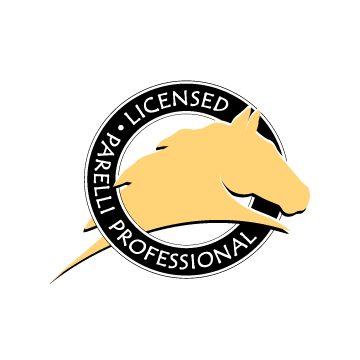Parelli Level 3 On-Line Notes
- Be good with coiling your rope
- Keeps it neat and safe, helps reduce coil tension
- Know the difference between suggest, ask, tell, and promise
- Use intent / body language with the phases
- Horses want safety, comfort, and play
- Horse's Responsibilities: maintain gait, maintain direction, look where he's going, don't act like a prey animal
- When the rope is on the horse pretend like it's not
- Expect a lot, ask little, reward often
- 51/49 partnership > use the attitude of justice
- Human - how appropriate am I in applying pressure?
- Be particular without being critical - go for excellence / refinement
- Respect = appropriate response to pressure
- Horsenality = environmental factors, innate characteristics, and learned behavior
- In Level 3 have more function to the games
- Straight lines for friendly (i.e., handshake, Labrador), curves/arcs for dominance (i.e., Border Collie), change in energy and intention with straight lines and arcs
- Level 3 horses respond with respect and without fear
- Trust is good, but control is better
- Advanced concept for the driving game - play it on a circle (don't make it lunging!)
- 1st 3 games are like primary colors
- Humans have circular body space - adding the Carrot Stick makes us oval, horses have an oval body space
- Straightness is very important in the yo-yo (no yo-nana!)
- Transitions are yo-yos
- Get away from wiggling the rope, use the stick to drive horse back - head/neck posture, performance down the road
- Play with the yo-yo from different zones
- Leadership through polite and passive persistence in the proper position
- Play the games with a purpose
- Yo-yo is a fulcrum game
- On a circle there is the send, allow, bring back, AND resend
- Resend engages the mind then the body
- Be assertive (half way between being a wimp and being aggressive)
- Impulsion is emotional collection, go = whoa
- Remember persona body posture - intent / netural
- Disengage the hindquarters for safety (base narrow), base wide / engagement = power
- Look for even slack in the rope on a circle, a circle shows what's important to the horse: safety, comfort, or play
- It is natural for prey animals to be pattern animals
- Human's Responsibilities: think like a horse (feel, think, act, play), have an independent seat (or feet!), use the natural power of focus, don't act like a predator
- Important to lead the nose when teaching leads on the bow tie pattern
- Wait until the horse has passed your body, walk with him, lead the nose, ask for lead > timing is important here!
- Circles build sideways
- Consistency creates obedience, obedience is the message getting to the feet
- Mind, body, weight, feet
- Obedience + Exuberance = Dignity
- Sideways on a circle slows the horse down, helps refine things - don't wiggle the rope at horse, pattern interrupt
- Be progressive!
- Seeking Positive Reflexes = Effort
- Can up the Squeeze game by adjusting impulsion
- Leadership means you've got a plan
- Use the rail for help in change of direction
- Think of your belly button as a start or finish line - push the energy of the horse up or down after the horse passes the line (upward) or before they get to the line (downward)
- Circles - maintaining a true, quality neutral, changing directions, nice transitions
- Sideways allows the horse to have suspension naturally
- 45' line - toss and coil both right and left handed
- Punsishment makes prey animals act more like prey animals and convinces them we are predators
- Know the Bank Robbers knot as a quick release knot, especially for trailer tying
